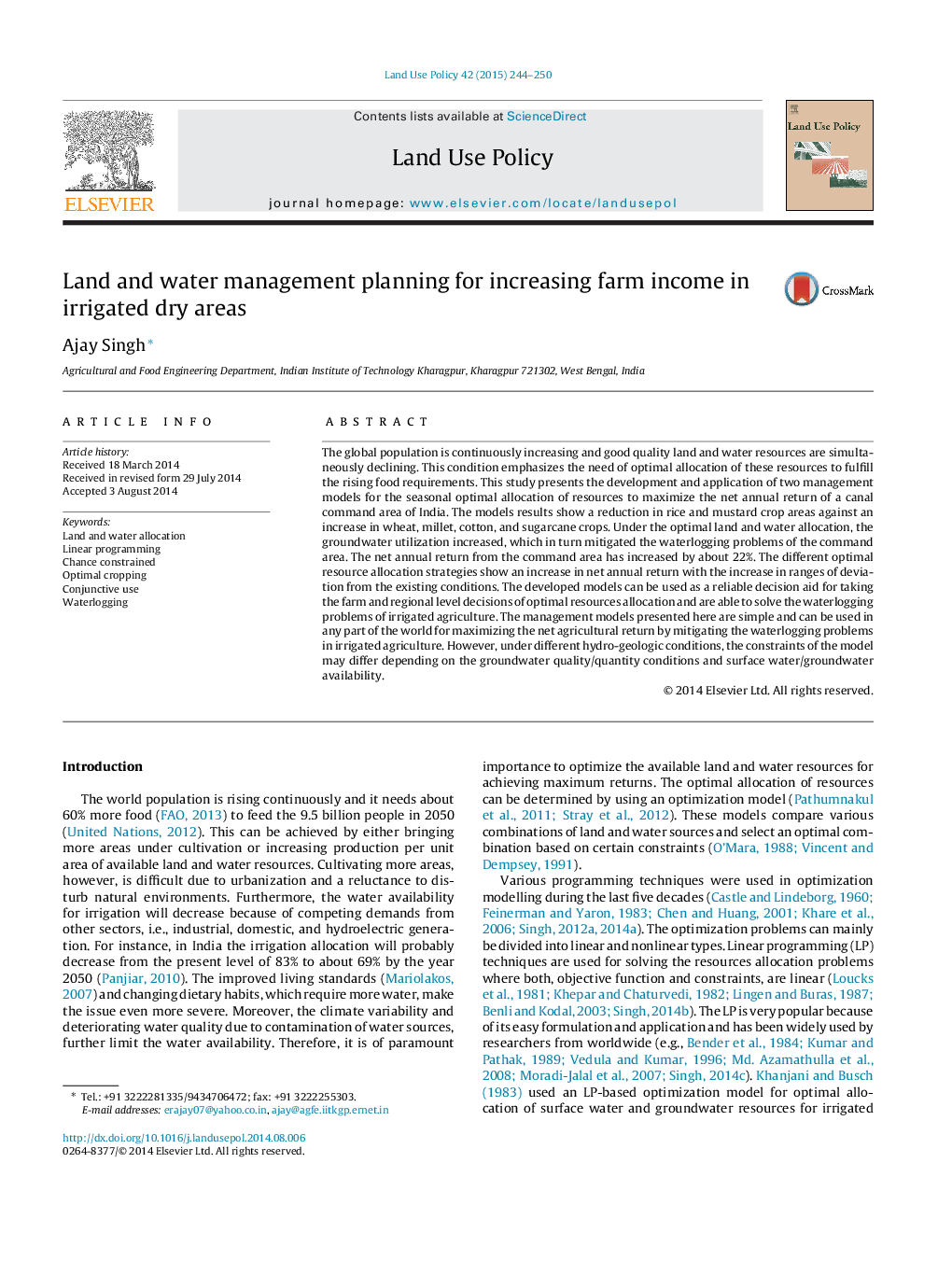| Article ID | Journal | Published Year | Pages | File Type |
|---|---|---|---|---|
| 6548388 | Land Use Policy | 2015 | 7 Pages |
Abstract
The global population is continuously increasing and good quality land and water resources are simultaneously declining. This condition emphasizes the need of optimal allocation of these resources to fulfill the rising food requirements. This study presents the development and application of two management models for the seasonal optimal allocation of resources to maximize the net annual return of a canal command area of India. The models results show a reduction in rice and mustard crop areas against an increase in wheat, millet, cotton, and sugarcane crops. Under the optimal land and water allocation, the groundwater utilization increased, which in turn mitigated the waterlogging problems of the command area. The net annual return from the command area has increased by about 22%. The different optimal resource allocation strategies show an increase in net annual return with the increase in ranges of deviation from the existing conditions. The developed models can be used as a reliable decision aid for taking the farm and regional level decisions of optimal resources allocation and are able to solve the waterlogging problems of irrigated agriculture. The management models presented here are simple and can be used in any part of the world for maximizing the net agricultural return by mitigating the waterlogging problems in irrigated agriculture. However, under different hydro-geologic conditions, the constraints of the model may differ depending on the groundwater quality/quantity conditions and surface water/groundwater availability.
Related Topics
Life Sciences
Agricultural and Biological Sciences
Forestry
Authors
Ajay Singh,
